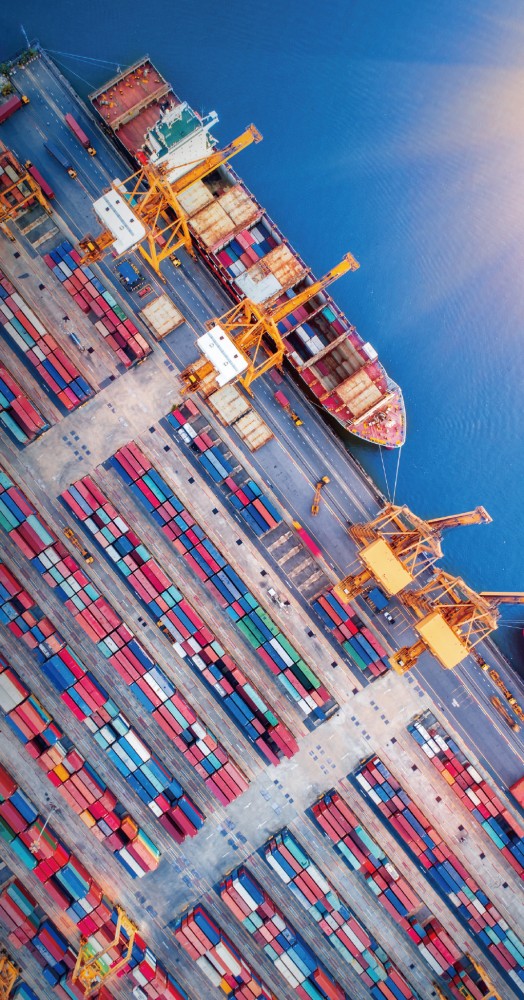The COVID-19 pandemic over the past two years has led to a slump in global economic markets and supply chains, while resulting in an acceleration of digitization in business and trade activities around the world. Hong Kong will likely be able to revive foreign trade momentum in the post-pandemic era if it can strive to join the RCEP as soon as possible.
Liang Haiming: RCEP Creates a New Centre of Gravity for Global Trade

According to some academics, as Hong Kong is an important trading platform for the 15 RCEP member countries, at the current stage, it can play a “dual connection” role for “physical border-opening” with the wider world and “soft border-opening” with the Mainland. After joining the RCEP, it could then leverage the strengths of the Greater Bay Area to gradually develop into four main hubs under the RCEP.
Liang Haiming, Chairman of the China Silk Road iValley Research Institute and Dean of the Belt and Road Research Institute at Hainan University, said that trade between China and the other 14 RCEP member countries reached RMB8.32 trillion in the first eight months of this year, representing 30.5% of the Mainland’s total foreign trade. That includes RMB38.1 billion in imports with a tariff cut of RMB880 million and RMB143.3 billion in exports with a tariff cut of RMB910 million under the relevant preferential tariffs, reflecting the increasingly prominent benefits from the implementation of the RCEP.
Amid a slump in the global economy and supply chains caused by the pandemic over the past two years, the market generally looks to the world’s largest super economic circle bringing new opportunities. Liang said that according to a study published by a relevant UN unit, the combined GDP of RCEP member countries represented about 30.5% of the world’s total, and the RCEP bloc’s economic size and trade dynamism are set to make it a new center of gravity for global trade.
“As currently the only regional free-trade agreement that is centered on developing economies, the RCEP strives to maximize the balance of economic interests among member countries based on development-focused interests.” Liang added that the RCEP aims to promote the signing of a comprehensive and mutually beneficial economic partnership agreement, and that the Guiding Principles and Objectives for Negotiating the Regional Comprehensive Economic Partnership indicated that the RCEP will open the door for countries or regions interested in joining it by establishing open access clauses.
Development of four main hubs under RCEP
 Hong Kong is geographically situated almost in the center of the RCEP member countries. Liang stressed that Hong Kong could further develop into a central city of the RCEP and become four major hubs in the future if it is able to secure the opportunities for development. “Firstly, it can be a hub for regional RMB settlement. One of the keys to the implementation of the RCEP is the need to coordinate financial policies in the region and avoid problems such as mismatches in currencies, timing and use of funds through the use of a stable currency. Hong Kong is well positioned to develop into a hub for RMB settlement under the RCEP to pilot the use of the RMB for settlement of trade transactions among members in the region.”
Hong Kong is geographically situated almost in the center of the RCEP member countries. Liang stressed that Hong Kong could further develop into a central city of the RCEP and become four major hubs in the future if it is able to secure the opportunities for development. “Firstly, it can be a hub for regional RMB settlement. One of the keys to the implementation of the RCEP is the need to coordinate financial policies in the region and avoid problems such as mismatches in currencies, timing and use of funds through the use of a stable currency. Hong Kong is well positioned to develop into a hub for RMB settlement under the RCEP to pilot the use of the RMB for settlement of trade transactions among members in the region.”
“The second is a hub for trade in education services. Trade in services is an important way for developed economies to leverage their strengths and expand their exports. It is also an important vehicle for developing economies to make full use of global services and improve their own economic and industrial structures.” Liang said that going forward, China will likely be able to attract more people from RCEP member countries to its shores to study or further their studies. And Hong Kong can actively participate in developing the Greater Bay Area into an international demonstration zone for education.
The last two are a regional hub for international talents and another one for international arbitration. Liang said that Hong Kong can adopt a set of more relaxed policies concerning entry and exit visas, work visas, visitor visas and student visas for the 2.3 billion people in the RCEP member countries to encourage more of them to come to the Greater Bay Area, thereby developing a pool of talents for economic development and technological progress. “As the only jurisdiction in the world with a bilingual common law system in both Chinese and English, Hong Kong can also offer companies with legal safeguards for cross-border investments and transactions.”
Hong Kong should take on a dual connection role
 Referring to Hong Kong’s role, Liang believes that following the gradual relaxation of its anti-epidemic and quarantine measures, before joining the RCEP, Hong Kong can realize “physical border-opening” with the wider world in the post-pandemic era. It can also resume personnel exchanges with countries around the world, including the 15 member countries of the RCEP. In addition, its “soft border-opening” with the Mainland can enable a smoother flow of factors such as materials, capital and information.
Referring to Hong Kong’s role, Liang believes that following the gradual relaxation of its anti-epidemic and quarantine measures, before joining the RCEP, Hong Kong can realize “physical border-opening” with the wider world in the post-pandemic era. It can also resume personnel exchanges with countries around the world, including the 15 member countries of the RCEP. In addition, its “soft border-opening” with the Mainland can enable a smoother flow of factors such as materials, capital and information.
Liang noted that Hong Kong’s “dual connection” role can both provide a platform for the RCEP’s 15 member countries to invest in the Mainland and bring more diverse funds to itself, thus further cementing its status as an international financial center. At the same time, Hong Kong can support the Mainland’s economic development by continuing to serve as an international financing center for the latter to meet more of the funding needs of its relevant industries.
Wing Chu: RCEP Likely to Help Hong Kong Establish Status as Hub for Re-exports

Since the RCEP came into force, goods meeting the agreement’s rules-of-origin criteria are eligible for preferential tariff treatment in the form of duty reduction or exemption. Industries generally look to leveraging Hong Kong’s strengths for such an opportunity. To this end, the HKTDC Research Department has conducted a series of research to fully explore issues such as the RCEP’s impact on regional supply chains to help industries get ahead of the curve.
According to Wing Chu, Head of the HKTDC Research Department’s Business Advisory Section, since the RCEP came into force on 1 January this year, imports and exports between China and the other 14 RCEP member countries using relevant certificates of origin and tariff preference treatment have continued to rise in proportion, which has not only made it better for member countries in terms of liberalization and facilitation of trade and investment, but also helped maintain the smooth flow and stability of supply chains in the Asia-Pacific region.
Removal of trade barriers boosts productivity in Asia
 “Trade is set to be the first to exit the pandemic as normal transportation gradually resumes between countries and regions around the world.” According to Chu, the entire Asia-Pacific region has contributed to nearly half of global supply and production volumes for many years, with about 40% coming from the RCEP’s 15 member countries alone. Hence, besides looking to preferential tariff treatment to drive trade growth in the region, the market also pays attention to trade-facilitation initiatives that come with the RCEP, targeting to overcome some problems that hinder regional trade development together.
“Trade is set to be the first to exit the pandemic as normal transportation gradually resumes between countries and regions around the world.” According to Chu, the entire Asia-Pacific region has contributed to nearly half of global supply and production volumes for many years, with about 40% coming from the RCEP’s 15 member countries alone. Hence, besides looking to preferential tariff treatment to drive trade growth in the region, the market also pays attention to trade-facilitation initiatives that come with the RCEP, targeting to overcome some problems that hinder regional trade development together.
Chu added that these include accelerating the unification or recognition of member countries’ hygiene and product standards, facilitating the mutual recognition of electronic authentication and electronic signatures, and strengthening the protection of each other’s intellectual property rights in order to further boost the productivity of the region.
Hong Kong strives to join RCEP to further tap into business opportunities
In Chu’s view, although Hong Kong has not yet joined the RCEP, through the Hong Kong Customs and Excise Department’s (HKCED) “Free Trade Agreement Transhipment Facilitation Scheme”, its service scope now covers transhipments via Hong Kong from all RCEP member countries to mainland China and those from mainland China to South Korea and Australia. In other words, a trader only needs to obtain a “certificate of non-manipulation” issued by the HKCED to confirm the goods in question comply with the requirements and conditions of not having undergone any further processing and therefore qualify as a direct consignment for RCEP preferential tariff treatment.
Chu stressed that Hong Kong has submitted an application to join the RCEP in mid-January this year and its membership is expected to be enacted about 18 months after that. When it materializes, it will benefit various industries and help fully leverage Hong Kong’s strengths to step up the promotion of re-industrialisation and improve their own competitiveness, and through a diverse range of professional services, strive for Hong Kong to become a hub for RCEP member countries in education, services, mediation and arbitration, as well as a regional RMB settlement centre.




